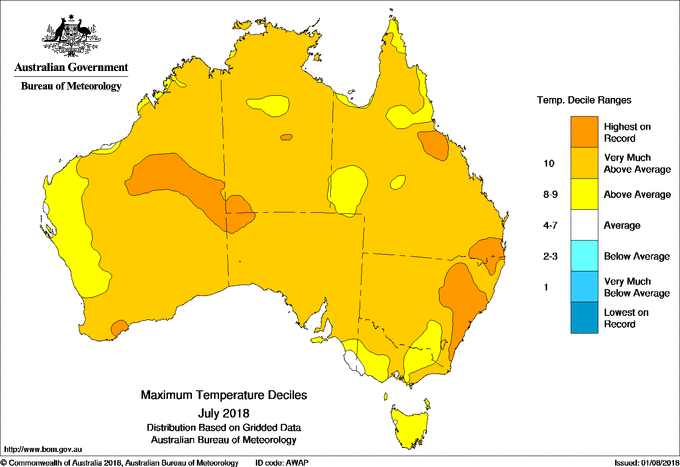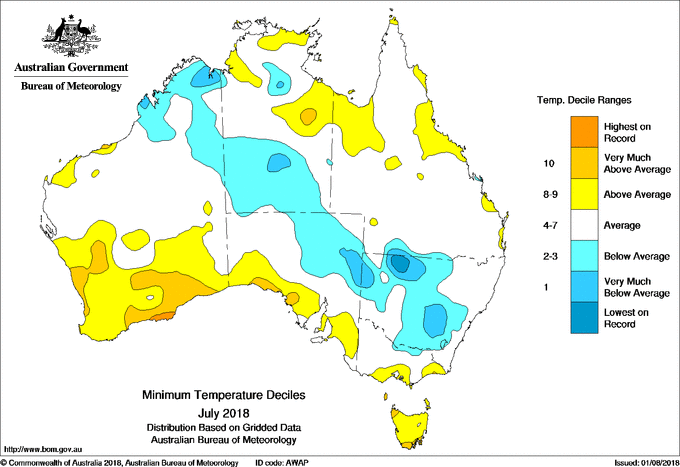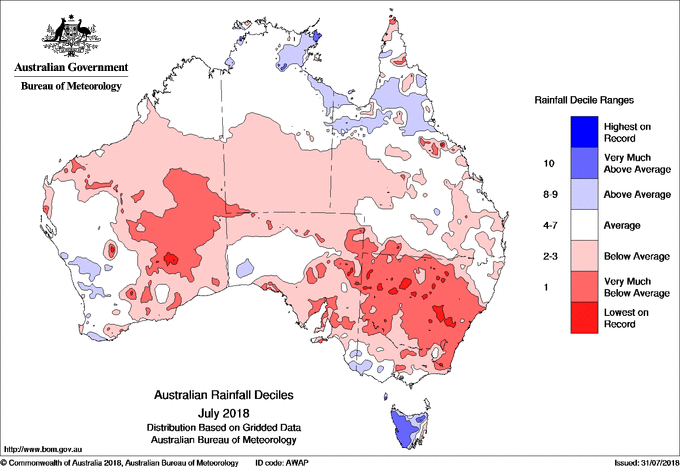The bite was significantly taken out of July for the second year running across Australia, with the nation experiencing its second warmest July days on record, and fifth warmest July overall, as the very dry conditions continued.
A persistent region of high pressure kept skies consistently cloud-free throughout the month, as cold fronts struggled to penetrate as far north as normal for this time of the year. This meant daytime temperatures were unusually warm, with the national average maximum temperature 2.22 °C above the average, the second warmest on record (after only last year).
Long-term maximum records were smashed in some major centres, including Sydney which beat its previous record set in 2013 by 0.4 °C (19.9 °C). Brisbane averaged 23.2 °C during the day in July, beating its previous record by 0.2 °C.
The clear skies and below average moisture levels allowed night time temperatures to be significantly cooler than days, although the national average minimum temperature was still 0.25 °C above average. However, a band from Broome in Australia's northwest to Canberra in the southeast recorded significantly colder than average nights, with some registering their coldest average July minimum temperatures on record.
Some short-term sites, including Parkes, Wollongong and Campbelltown registered both their warmest (days) and coldest (nights) July on record.
Unfortunately, the drought situation worsened, as the country saw its driest July in 16 years. Only western parts of Tasmania and eastern parts of the Northern Territory Top End saw significantly wetter than average conditions, whilst parts of eastern Western Australia, South Australia and New South Wales had their driest July on record.
Warmer than average and dry conditions are expected to persist across much of the country across the next few months.
Image 1. Maximum temperature deciles Image 2. Minimum temperature deciles Image 3. Rainfall deciles


